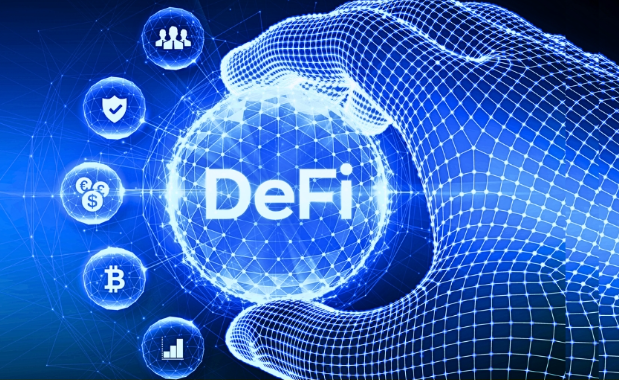Bera Chain represents a significant leap forward in the integration of blockchain technology with traditional finance. As an innovative, high-performance, and Ethereum Virtual Machine (EVM)-compatible blockchain, Bera Chain is uniquely positioned to bridge the gap between decentralized finance (DeFi) and conventional banking systems. This transformative platform, which started as an engaging non-fungible token (NFT) project, has evolved into a comprehensive ecosystem designed to streamline and secure financial transactions through its novel Proof-of-Liquidity consensus mechanism .
Understanding the Fundamentals of Bera Chain
Bera Chain stands out as a groundbreaking blockchain solution, leveraging its Proof-of-Liquidity consensus to enhance network performance and security. As an EVM-compatible platform, it ensures seamless integration with existing Ethereum-based applications while introducing innovative features that optimize liquidity and transaction efficiency. The core of Bera Chain’s design is to provide a robust infrastructure that supports a wide range of DeFi services, thereby facilitating a seamless transition for projects and developers from the Ethereum ecosystem to this new, optimized environment.
Bera Chain’s Role in the Fusion of DeFi and Traditional Banking
The advent of Bera Chain marks a pivotal moment in the convergence of DeFi and traditional financial systems. By incorporating built-in DeFi functionalities and promoting a validator-powered liquidity framework, Bera Chain paves the way for a more accessible, efficient, and secure financial landscape. This integration enables traditional financial institutions to leverage blockchain’s transparency, security, and efficiency, while DeFi platforms can benefit from increased liquidity and a broader user base. Bera Chain’s innovative approach serves as a blueprint for the future of finance, where decentralized and traditional banking coexist and complement each other .
The Security Advantages of Bera Chain in Financial Transactions
Security remains a paramount concern in the financial sector, and Bera Chain addresses this through its innovative Proof-of-Liquidity consensus and modular architecture. This unique consensus mechanism not only ensures the network’s integrity and resilience but also aligns the interests of validators and liquidity providers, creating a more stable and secure ecosystem. Furthermore, Bera Chain’s commitment to EVM compatibility extends to security practices, enabling comprehensive smart contract audits and fostering a secure environment for financial transactions. By implementing these security measures, Bera Chain offers a reliable and trustworthy platform for both traditional finance and DeFi applications.
Smart Contract Audit in Bera Chain: Ensuring Uncompromised Security
In the world of blockchain, the security of smart contracts is non-negotiable, given their role in managing, executing, and enforcing agreements digitally. Bera Chain underscores this by facilitating rigorous smart contract audits, a critical component in safeguarding against vulnerabilities and threats. The platform’s modular architecture not only allows for the seamless integration and operation of smart contracts but also enhances their auditability. By supporting familiar tooling from the Ethereum ecosystem and encouraging thorough security assessments, Bera Chain ensures that smart contracts operate as intended, fostering trust and reliability among users and developers alike. This approach mitigates the risk of financial loss and reputational damage, thereby attracting more users and developers to the ecosystem.
Challenges and Opportunities: Navigating the Future Landscape
Despite its innovative features and potential to revolutionize the financial industry, Bera Chain faces challenges typical of emerging technologies. These include stake centralization concerns, where the accumulation of too much control by a few entities can lead to vulnerabilities. However, Bera Chain’s design and governance model aim to counteract this by distributing power among a wider range of participants, thus promoting a more democratic and secure network.
Furthermore, the integration of DeFi and traditional banking remains a complex endeavor, with regulatory, technical, and adoption hurdles. However, these challenges also present opportunities for Bera Chain to lead by example, showcasing how decentralized technologies can complement traditional financial systems to create more inclusive, efficient, and transparent financial services.
The ongoing development and community engagement are crucial for overcoming these obstacles and realizing the full potential of Bera Chain. As the platform continues to evolve and adapt, it stands to significantly impact the way financial services are delivered and experienced worldwide.
Conclusion: Embracing the New Era of Finance with Bera Chain
In conclusion, Bera Chain represents a significant step forward in the fusion of blockchain technology with traditional finance. By addressing key issues such as liquidity, security, and accessibility, Bera Chain is poised to lead the transition towards a more integrated and efficient financial ecosystem. Its innovative Proof-of-Liquidity consensus, combined with EVM compatibility and robust security measures, positions Bera Chain as a formidable platform in the blockchain space.
The journey ahead for Bera Chain involves navigating challenges, harnessing opportunities, and continuously fostering community and development. As the platform matures, it has the potential to redefine the boundaries of finance, making decentralized financial services more accessible, secure, and efficient for all.
By maintaining its commitment to innovation, security, and community, Bera Chain can not only bridge the gap between traditional finance and DeFi but also pave the way for a new era of financial inclusion and empowerment.
